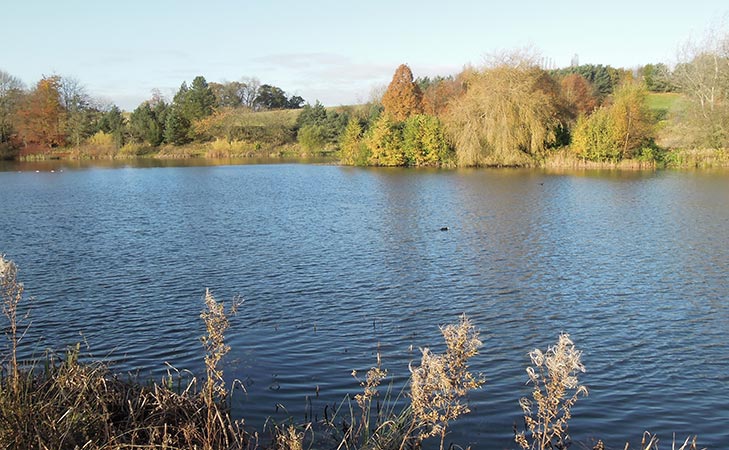Adam Lawrence reports on a visit to the proposed new JCB golf course in central England.
A soggy, grey day in the wettest January for a century wasn’t the best time to pay an initial site visit to England’s biggest new golf course project in years, but from a rapid walk around the site, three things are clear.
Firstly, the biggest challenge for architect Robin Hiseman and the construction team will be the soil, which is very heavy clay. Extensive engineering, including amelioration of the soil itself and a massive drainage system, will be required to produce a firm, quick draining course of the sort that will suit Hiseman’s design style. Secondly, and more optimistically, the site has some excellent natural features, with rolling topography, a couple of nice lakes and a very attractive stream. And thirdly, Hiseman’s routing makes excellent use of the property, with some dramatic holes in prospect, building up to an extremely demanding and exciting finish.
Other than the soil engineering, significant earthmoving will be confined to a few parts of the site. JCB chairman Lord Anthony Bamford has expressed a strong desire to see the lake that defines the opening hole from the clubhouse; this, along with the need to create a playable fairway surface, will require a substantial cut in the slope above the water. It should make for a very strong opener, though – the back tee will be sited among trees on the far side of the lake, and a large central bunker will threaten the tee shot, with the green itself sited across another tongue of water.
The small river will come into play on several holes. Tight behind the green on the downhill par three fifth, it will also define the eleventh and twelfth. The former, 390 yards from the back, will have a green fronted by the stream, while the drivable par four twelfth is set to be one of the highlights, with the water creating a Cape effect and bunkers short and left making putting pressure on both bold and cautious tee shots.
At the centre of the site, the JCB Arena – a facility used for demonstrating some of the firm’s largest machines – will remain and be enhanced. This, and the relatively tight areas around Woodseat Hall itself, made Hiseman’s routing more complex, but the par three ninth hole shows that necessity really is the mother of invention. Playing across a valley, the green will sit in the middle of what was formerly an arboretum, and will be framed by a number of huge specimen trees. It will also be right in front of the clubhouse terrace – not a place to make a bad shot on a big corporate day with your boss watching!

The tee shot on the eighteenth will be played to a very wide but severely sloping fairway
But it’s the closing holes that will be the most spectacular. Occupying the land closest to the factory, the stretch from 16-18 will tease and tantalise in equal measure. The sixteenth, a medium length par four, will dogleg round a very deep, tree filled hollow to a greensite atop the hill, while the seventeenth will undoubtedly be the memory most will keep in their mind. Since Pete and Alice Dye built the seventeenth at TPC Sawgrass, island greens have become something of a cliché, but Hiseman’s take will be a little different. Playing from a high tee to an existing island in the South Lake, the ‘official’ back tee sits at 230 yards from the 45 yard deep green, but another tee, to be created primarily for the alternative seventeenth, which will be played by those unable or unwilling to take on the island, means it can be stretched to fully 250 yards, albeit highly elevated. If Sawgrass’s hole gives professionals fits with a nine iron or wedge, it will be interesting to see them playing this with a four iron or hybrid!
How players will get to and from the island remains up for discussion. A causeway is one option, but the favoured choice at the moment seems to be a small chain ferry, perhaps with a boat at either end to avoid creating backups. Once on the island, though, the battle isn’t over. Hiseman’s finishing hole, which to my mind will be the best on the course by a distance, will be played from tees on the end of the island, requiring a carry to a very wide, but severely sloping fairway. Uphill and over 450 yards from the back, it will be a monster. Two separate central bunker complexes will split the fairway (the second will provide interest to the layup for those who don’t go for the green in two). A small ‘lion’s mouth’ bunker in the front of the green will make the choice of preferred angle – and thus the ideal drive line – totally dependent on pin location. Players hitting to the lower side of the fairway will get the shortest route, but their view of the green will be hindered; those who challenge the central bunkers and get onto the higher right side will get a clear sight of the green.